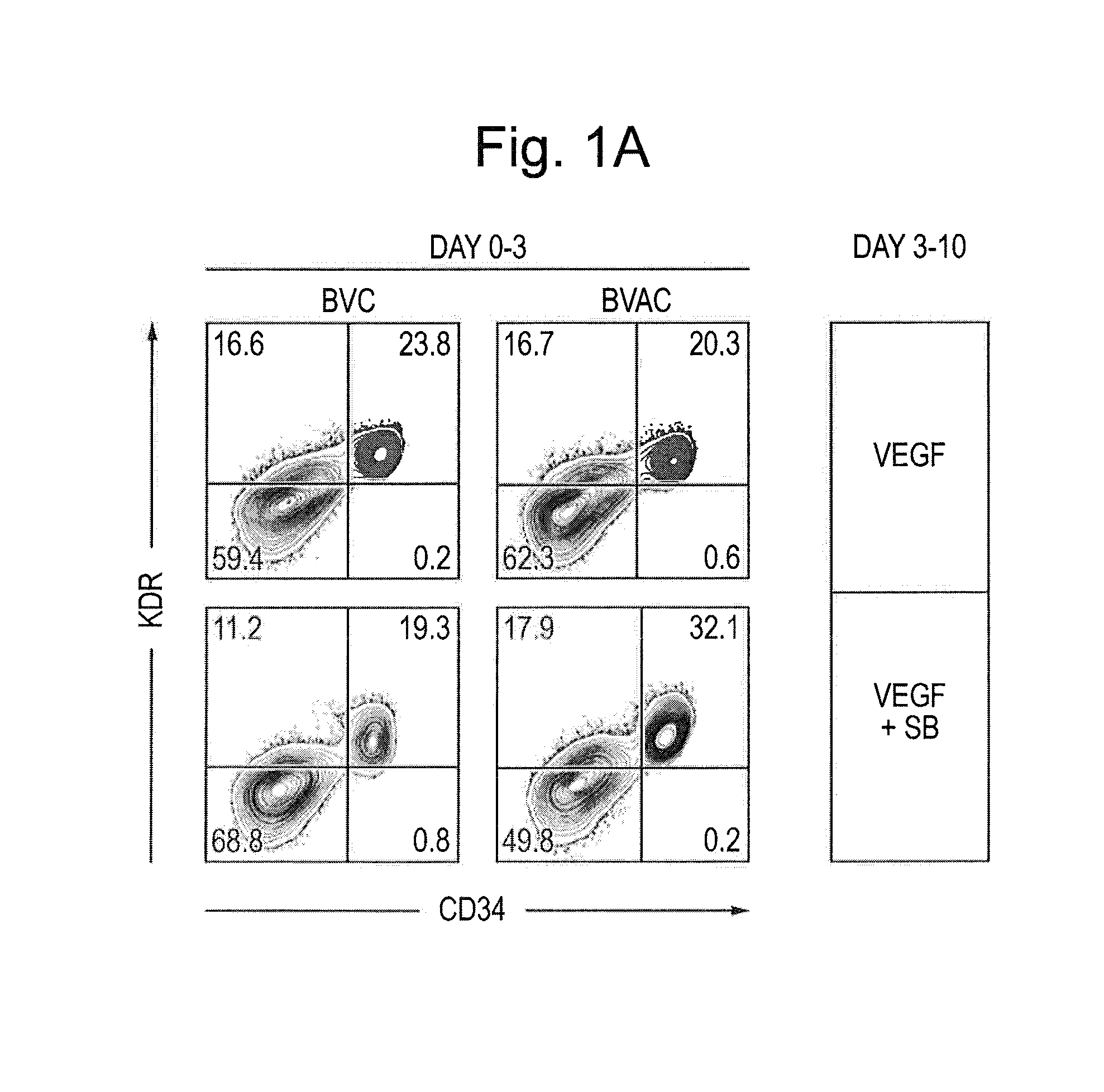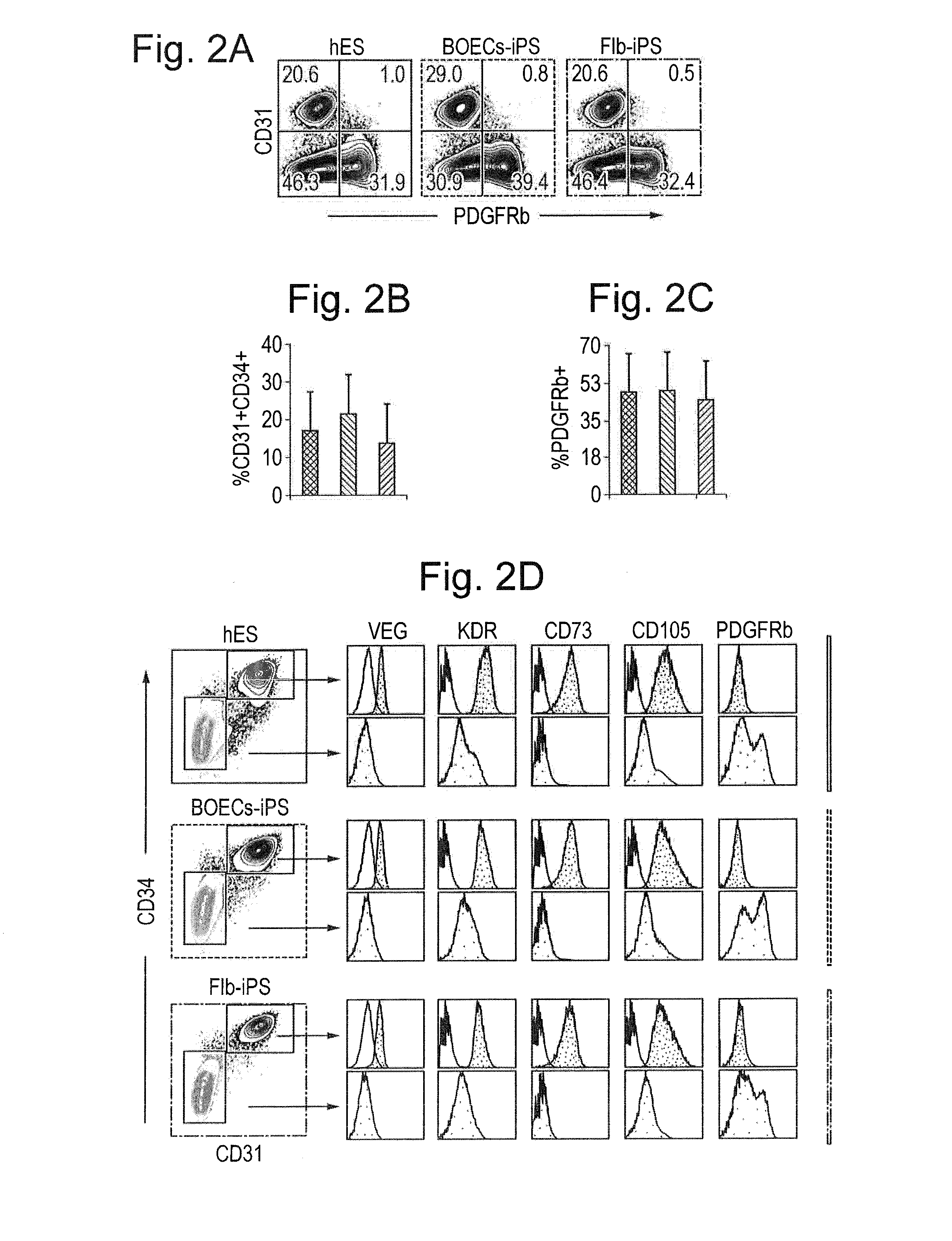Differentiation and expansion of endothelial cells from pluripotent stem cells and the in vitro formation of vasculature like structures
a technology of endothelial cells and stem cells, applied in the field of cell biology and medicine, can solve the problems of not being able to achieve the effect of preventing the formation of abnormalities, not yet clear how widely applicable, and allowing boecs and pbmcs to expand in vitro, and achieve the effect of equal efficiency
- Summary
- Abstract
- Description
- Claims
- Application Information
AI Technical Summary
Benefits of technology
Problems solved by technology
Method used
Image
Examples
example 1
Methods
Cell Culture and Differentiation
[0081]hiPSC lines were generated from Fib or BOECs using conditional lentiviral vectors containing the four transcription factors oct4, c-myc, Klf4 and Sox2, and characterized as described previously (Dambrot et al., 2013; Freund et al., 2008; Orlova et al., manuscript in preparation). hiPSCs and hESC (line HES-NL4; (van de Stolpe et al., 2005)) were routinely maintained on growth factor reduced MATRIGEL®-(BD, 354230) coated plates in mTeSR media (StemCell Technologies, 05850) and passaged mechanically. Differentiation was induced three days after passaging colonies by replacing mTeSR medium with the differentiation media based on BPEL (without PVA) (Ng et al., 2008) with timed addition of the following growth factors: 25 ng / ml ActivinA (Miltenyi, 130-095-547), 30 ng / ml BMP4 (Miltenyi, 130-095-549), VEGF165 (R&D Systems, 293-VE) and small molecule inhibitor CHIR99021 (Tocris, 4423). At day 3 and day 7 of differentiation, the media was refreshed...
example 2
Results
Derivation and Characterization of HHT1-iPSCs
[0110]Numerous iPSCs clones were generated from somatic tissue from two HHT1 patients with different ENG mutations (FIGS. 6A-6E) with normal efficiencies using standard reprogramming methods (Dambrot et al., 2013) indicating that the mutations did not affect reprogramming as such. Mutations were confirmed by sequencing of genomic DNA isolated from HHT1 patient-specific and control iPSC lines (FIG. 6B). Undifferentiated iPSC lines were maintained on MATRIGEL® in mTESR1 medium for at least 25 passages and expressed typical markers of pluripotent stem cells as shown by immunostaining (FIG. 6C). When allowed to differentiate spontaneously in culture all iPSC lines readily gave rise to the derivatives of the three germ layers, e.g., neurons expressing βIII-tubulin (ectoderm), endodermal cells expressing alphafetoprotein (AFP) and SMCs expressing smooth muscle actin (mesoderm) (FIG. 6E). To confirm pluripotency of the undifferentiated iP...
PUM
| Property | Measurement | Unit |
|---|---|---|
| temperature | aaaaa | aaaaa |
| temperature | aaaaa | aaaaa |
| real time PCR | aaaaa | aaaaa |
Abstract
Description
Claims
Application Information
 Login to View More
Login to View More - R&D
- Intellectual Property
- Life Sciences
- Materials
- Tech Scout
- Unparalleled Data Quality
- Higher Quality Content
- 60% Fewer Hallucinations
Browse by: Latest US Patents, China's latest patents, Technical Efficacy Thesaurus, Application Domain, Technology Topic, Popular Technical Reports.
© 2025 PatSnap. All rights reserved.Legal|Privacy policy|Modern Slavery Act Transparency Statement|Sitemap|About US| Contact US: help@patsnap.com



